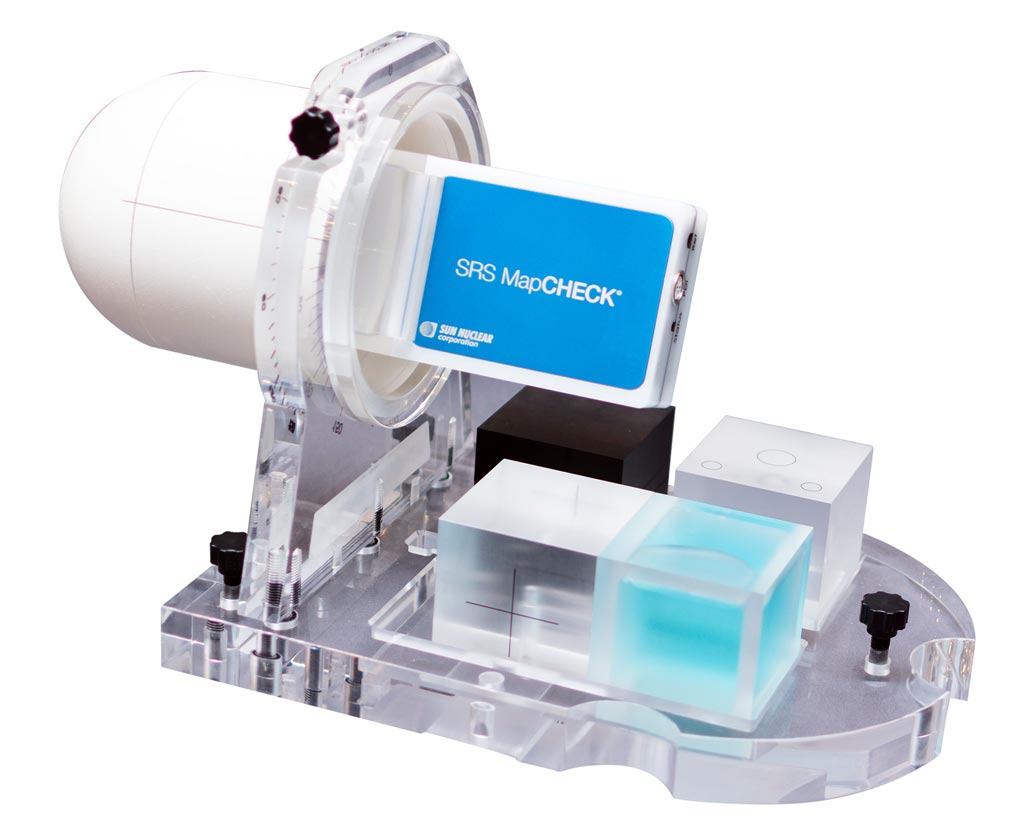SRS Detector Array Validates Dosimetric Treatment Plans
By MedImaging International staff writers
Posted on 25 Oct 2018
An innovative diode-based device addresses the growing need for quality assurance (QA) during stereotactic radiosurgery (SRS), replacing traditional film-based and standalone measurement methods.Posted on 25 Oct 2018
The Sun Nuclear (SNC; Melbourne, FL, USA) SRS MapCHECK device is based on a high density diode array designed to replace film and single point dosimeters for patient specific and end-to-end QA. The 2.47mm detector grid provides a 0.5mm resolution using 1,013 SunPoint 2 diodes set in a 2D array, providing both absolute and relative dose in a single measurement. MapCHECK inserts into the rotatable StereoPHAN phantom, with angular dependence, field size, and pulse rate accounted for any angle. SRS MapCHECK works with static, rotational, non-coplanar, flattening filter free (FFF), and cone and multileaf collimator (MLC) fields of 1 - 6 and 10MV.

Image: The SRS MapCHECK inserted in the SNC StereoPHAN phantom (Photo courtesy of SNC).
The accompanying SNC Patient software allows rapid analysis of QA measurements against the SRS treatment planning system (TPS), comparing radiotherapy (RT) dose distribution of the TPS file to the actual measured values. Users can query various points from the dose distribution, including absolute dose, absolute and relative dose difference between measured and planned dose data, and location relative to isocenter. Measurements use standard RT dose comparison metrics: gamma analysis, dose difference analysis, and sub-millimeter distance criterion.
“The SRS MapCHECK is an effective tool for patient-specific and end-to-end stereotactic QA. It shows good agreement with film dosimetry for field sizes ranging from seven centimeters to half a centimeter,” said Brett Miller, MSc, DABR, of the University of Tennessee Medical Center (Knoxville, USA). “It proves to be an effective, time-saving substitute for film and point dose measurements.”
SRS is used to treat functional abnormalities and small tumors of the brain, delivering precisely targeted RT in fewer high-dose treatments than traditional RT, which can help preserve healthy tissue. When SRS is used to treat body tumors, it is called stereotactic body radiotherapy (SBRT). Both SRS and SBRT are image-guided RT, relying on three-dimensional (3D) imaging and localization techniques, immobilization systems for precise patient position during therapy, and highly focused gamma-ray or x-ray beams that converge on the tumor.
Related Links:
Sun Nuclear














